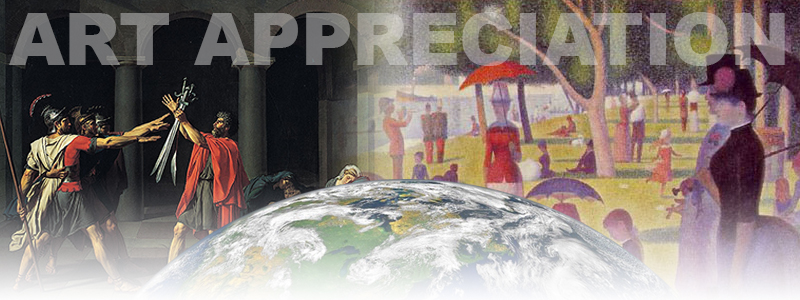Blog
The Lasting Value of Art Appreciation
Apr 3, 2017, 00:18 AM
by
User Not Found
If you're wondering why you are required to take art appreciation as part of your degree, read this submission by Elizabeth Griffith, artist and marketer.
By Elizabeth Griffith | April 3, 2017

Art history professors may disagree with me on this, but I believe the real value of a great art appreciation course is not found in the memorization of artists’ names, titles, dates, and places. Nor is it becoming familiar with artistic movements like Romanticism, Pointillism, or any other ism. Although knowing those things will certainly help you make the grade and keep your professor happy, in the long run, I believe you gain the most from your insights into the human condition with the opportunity to mentally travel through space and time.
Through studying masterpieces created by the world’s most renowned artists throughout history, you have access to perspectives, stories, and inspiration which have helped shape our civilization. After all, what could be better than learning about life, love, spirituality, politics, history, fantasy, and culture then through artistic expression skillfully executed by a master craftsman?
Art is often said to be an expression of the soul. It is this expression which speaks directly to our desires to understand that which makes us human. Vincent van Gogh said, “I am seeking. I am striving. I am in it with all my heart.” How many people attack their own lives and careers with that same focus and passion?
Art appreciation bridges the gap that lies between the heart and the head by connecting us to something much bigger than ourselves. We examine the architecture, illustrations, paintings, and sculptures that introspectively transport us to another time and place while portraying limitless range of human experiences, from victory to defeat and apathy to empathy. By seeking to understand an artists’ message, we tap into the emotions, thereby giving us a greater ability to empathize with others—despite the lack of environmental, cultural, or socioeconomic similarities.
According to the United States Department of State, in 2016 less than half of our eligible citizens held a valid passport. The National Travel and Tourism Office reports only 10 percent of the U.S. population traveled overseas—excluding Canada, Mexico, and the Caribbean. Say we estimate half of that 10 percent to have traveled for business purposes, then only five percent traveled with the intent to see and experience the world and its diverse cultures—many of which were directly responsible for producing the very work featured in our textbooks. With limited first-hand exposure to such profound work, which directly reflects the origins of our culture, it makes sense for art appreciation to be a required course in higher education?
As you can imagine, the majority of people in the United States are not able to fully experience such treasures in person, such as the delicate features of the Mona Lisa, the overwhelming beauty inside the Sistine Chapel, or see the Venus de Milo in the round. However, this inaccessibility shouldn’t stop us from immersing ourselves in a world meant to enrich and enlighten us.
I encourage you to explore the art galleries at Marian University. They are open to the public and feature a variety of professional and student work throughout the year. We are just a few minutes from the front doors of the Indianapolis Museum of Art, where you can get so close to the work of world famous artists that you can see their brush strokes. Of course, art isn’t only found in galleries or museums, it is all around; you just have to look for it. I hope that when you do see it, you’ll remember the lessons you walked away with from your brief time in art appreciation.
© 2021 Marian University
Notice of Nondiscrimination
Marian University does not discriminate on the basis of race, ethnicity, color, sex, gender, gender identity, sexual orientation, religion, creed, national origin, age or disabilities in the selection
of administrative personnel, faculty and staff, and students.
*Placement rates are gathered from data collected from graduates within six months of graduation.
Students may make a complaint to the Indiana Commission of Higher Education.
Marian University is sponsored by the Sisters of St. Francis, Oldenburg, Indiana.
Submit a Marketing Request
Website built with